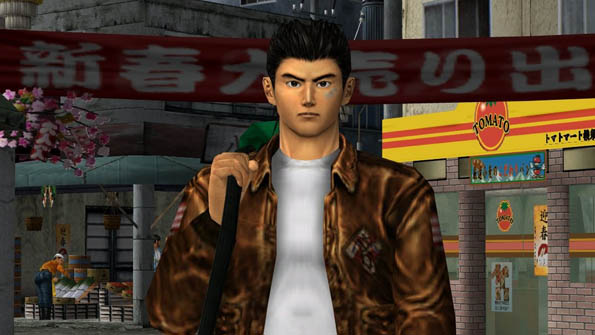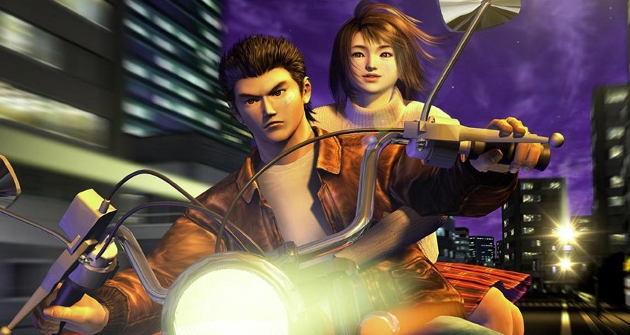he rest of the universe is very nervous with the momentazo of the summer: the World Cup of Russia. I have been told that it goes from people kicking a ball and something that people are going to a VAR, which I think is very appropriate in this heat. I do not have eyes for that matter right now. I prefer to think about the OTHER momentazo of the summer: the arrival of Shenmue I & II next August 21 . Ok, the fat, fat will be Shenmue III , but knowing the perfectionism of Yu Suzuki , it will be better to wait for him sitting down. That perfect, that perfect.
So, the next time we see Ryo Hazuki again in August … Unless we have a Dreamcast and the original games, of course. In an incredible turn of events … It turns out that I have them! So, I wanted to refresh sensations before the remasters arrive and go back to spend the first two Shenmue , to then compare the improvements of the new version. Total, as today I do not have 3000 games to try … But Yu Suzuki is much Yu Suzuki, friends.
At the time of writing these lines, I just finished the first Shenmue and start the second one, so I decided to stop along the way and reflect on the title I just completed, to share my feelings with all of you. Let’s put in background: it’s been 19 years since the game came to Dreamcast. We analyzed it in the number 111 of Hobby Consoles . It was my partner David Martinez who gave him a note, pché, slightly high: nothing less than a 98, friends. So, it became one of the best Dreamcast games … And history. Is it still, today?
Let’s start with the technical section, which is the first thing that draws attention when loading the game. Logically, two generations of consoles later (do not forget that Dreamcast was the “advance” of the generation PS2-GameCube-Xbox ), the visual ceiling has risen a lot (especially in terms of the number of objects on the screen, the resolution of the textures or the facial animations), but the level of detail reached in the representation of the characters continues to be surprising. Above all, because Suzuki wanted to bet on hyperrealism in the most literal sense of the word: no archetypal characters and provided by the principle of Greek proportionality. Here we see elderly people, businessmen walking home drunk, workers with a careless face.
The objective was to reflect the reality of rural Japan in 1986 , with its beauty and ugliness. Apart from that, there is another facet of the first Shenmue that continues to leave us stunned. All, absolutely all the characters we see in the game have their own face and routine. As we move forward in the plot, we become familiar with the shopkeeper who opens his post at the same time, the fisherman who leaves the port when the sun sets or the thugs who walk between the stores. To this day, I can not think of any other adventure in which we get to learn the proper names, faces and routines of all the NPCs that we meet. So much so, that when you finish the game, a certain sorrow invades you, because you really feel that YamanoseIt is something like “your people” and you must abandon it. Put another way, you understand that you are facing an adventure of uncertain end, emotions and drama at the height of any Final Fantasy or GTA, but everything feels closer, more endearing.
All this, of course, is also due to conversations with those secondary characters, who certainly have a huge catalog of answers depending on the context in which we ask them. If you ask them 3 or 4 times in a row, you see the “trap” in the dialogue system, of course, but within a normal game dynamic, the sensation is to be asking real people for real directions.
That leads us to one of the aspects that have aged worse: okay, that dynamic is surprising at first, but the development depends too much on “discovering a new datum, wait until a specific time, ask the person who arrives at that time” . Come on, we have once called Shenmue I as a “simulator to ask people” and the thing is not very misguided. From the eyes of 2018, the secondary tasks, such as buying collectible figures or enjoying the recreative room, may seem insufficient … But we must remember that this is a game that came 2 years ago that GTA III and its open world in 3D. With the passage of time, we have gone further, but to achieve it, Shenmue first had to arrive and change the schemes.
In any case, it is clear that the idea of having to wait at specific times becomes quite heavy, since there is no function to accelerate time here as in Skyrim or Assassin’s Creed Origins . It’s time to look for an entertainment … The remaster of Shenmue I & II will solve this problem that, we understand, at the time it was left to give us the feeling that the days really pass, but that from any current perspective is a burden.

Another of the great innovations of Shenmue was getting used to the Quick Time Events . It was not the first time that we were challenged to press the button at the right time, but it was the first time it was named QTE and in which the dynamics were stylized to make it much more frenetic and attractive. Today, QTEs are still exciting and tense in Shenmue, but they have one big problem: if we fail, nothing happens, we just try again. In a sector accustomed to games like Detroit: Become Human , in which every mistake can ramify the story, it can clash that Shenmue is so guided in that sense … But, again, you can be clear that David Cage would not have conceived games well if there had not been the adventure ofRyo Hazuki .
There are other cases in which the sense of reality prevails over, let’s say, the most traditional entertainment. The epitome is the section in which we look for a job in the port, transporting boxes with the forklift. It is a mechanical task, repetitive and even a little heavy. Of course, when the day ends, we have the feeling that we have really earned our salary and we are even proud to have transported more boxes than we were asked to. It is clear that they are challenges that will not please everyone, but give a unique personality to the whole.

To those more mundane aspects of the setting, secret passages, oriental mythology, the most stylized side of martial arts and premonitory dreams are joined. There is a lot of magic in this package, although it is disguised as everyday reality.
The control is another facet that has aged regulín-regulán: to not have two sticks to control the camera and the character simultaneously, more than once we will be surprised looking up and down, when what we wanted was to move forward. One gets used to everything, but it is clear that the years have advanced for good in that sense.

In short, there are great antiquated facets (not being able to keep fixed when we want, but we generate a single-use save unless we return to our house) and others that continue to cause envy of modern games (its spectacular system of climatology and how the NPCs react to it), but … What do we feel when we reach the final credits?
I recognize that I find it difficult to be objective with this saga, because at the time it marked me like no other, but my verdict is that this will not be a game for everyone, even with the changes that the remaster will add. It has a slow rhythm, almost contemplative at times, that is not going to match the one that expects a kind of modern sandbox . However, if what matters is the story, the philosophy behind it and, ultimately, a setting with personality, you will have tried few more satisfactory proposals that is in your career as a gamer.
When you start Shenmue II , you realize that a couple of years were enough to improve many facets of the first delivery (like the interface and even the level of detail of Ryo), but there is one aspect that will never get old: that heat that invades you when You see the final plane of the ship in Shenmue and you think: “a great adventure has just begun”.